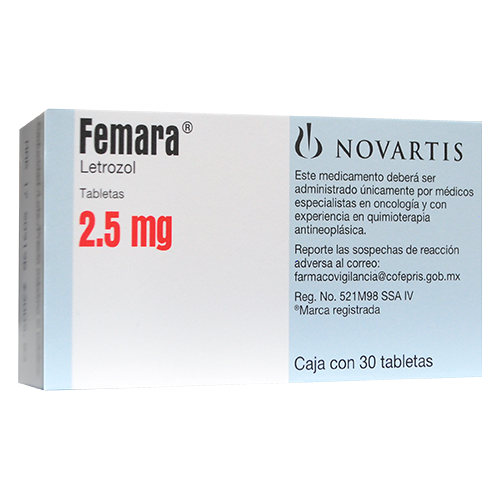Description: Femara is a medication available in the form of tablets. The active ingredient in Femara is letrozole, which belongs to a class of drugs known as aromatase inhibitors. Letrozole is used primarily in the treatment of certain types of breast cancer, specifically hormone receptor-positive breast cancer in postmenopausal women.
Medical Uses: Femara is commonly prescribed for the adjuvant treatment of early breast cancer in postmenopausal women who have already undergone surgery to remove the tumor. It is also used in the extended adjuvant treatment of early breast cancer after the completion of five years of tamoxifen therapy. Additionally, Femara may be used as a first-line treatment in advanced breast cancer.
Mode of Action: Letrozole works by inhibiting the aromatase enzyme, which is responsible for the conversion of androgens into estrogens in peripheral tissues. By reducing estrogen levels, Femara helps to slow down or inhibit the growth of hormone receptor-positive breast cancer cells.
Dosage and Administration: The dosage of Femara is determined by a healthcare professional based on the specific characteristics of the patient and the type of breast cancer being treated. The medication is usually taken orally in the form of tablets, and the prescribed dosage schedule should be followed.
Side Effects: Common side effects of Femara may include hot flashes, joint pain, fatigue, nausea, and bone pain. As with any medication, patients are advised to report any unusual or severe side effects to their healthcare provider.
Precautions: Before using Femara, patients should inform their healthcare provider about their medical history, including liver problems and osteoporosis. It’s important to disclose all medications being taken to avoid potential interactions.
Duration of Treatment: The duration of treatment with Femara is determined by the healthcare provider and may vary based on the specific circumstances of the patient.
Prescription Required: Yes, Femara is a prescription medication, and it should only be used under the guidance and supervision of a qualified healthcare professional.
It’s important for individuals to consult their healthcare provider for personalized advice, and they should report any unusual or severe side effects promptly. This information is a general description, and specific product information and medical guidance should be sought for individual cases. Additionally, the availability of medications and their descriptions may change, so the latest information from healthcare professionals or authoritative medical sources is recommended.
Chemical name: 4-[(4-cyanophenyl)-(1,2,4-triazol-1-yl)methyl]benzonitrile;
Formula: C17H11N5












Reviews
There are no reviews yet.